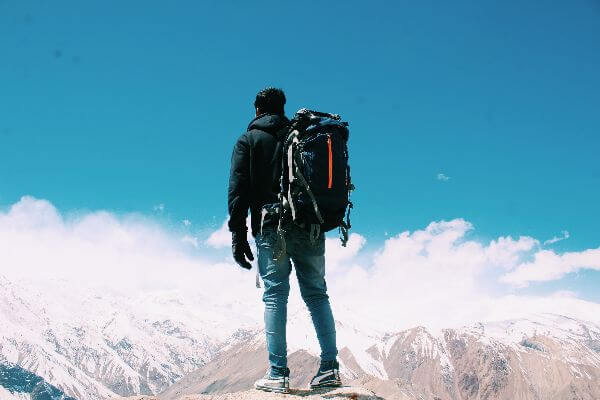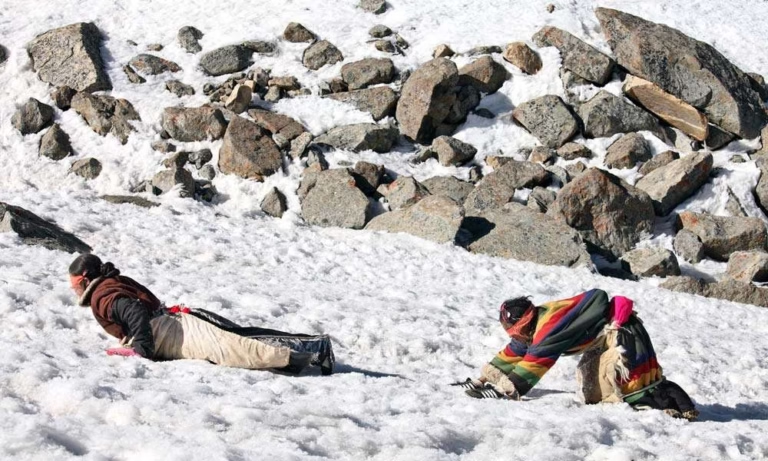How to Deal With Altitude Sickness in Tibet?
Planning a trip to Tibet? Are you worried about altitude sickness?
When it comes to Tibet travel, there are three main types of people:
- First-timers who have no clue about altitude sickness.
- Travelers who are extremely worried about this condition.
- Well-informed travelers taking mindful caution without worrying too much.
You want to be the third type. Don’t get us wrong: altitude sickness (AS) may become a life-threatening condition. But understanding the symptoms and dealing with risk factors is the way forward. Too much worry clouds the amazing experiences that Tibet has to offer.
Why is altitude sickness an issue in Tibet?

Tibet rests on top of the world’s highest plateau. The average altitude in this area hovers around 4,000 meters (13,120 ft). There are not many places on the planet where you could deal with altitude sickness without mountain trekking.
For example, even the Potala Palace elevation stands at an astounding 3,700 meters (12,100 ft).
When it comes to Tibet health concerns, altitude sickness tops the list. People visit sights and regions on the plateau that are even higher. The altitude gain raises the risk of developing medical issues.
Altitude sickness kicks in above 2,500 meters. Some people may experience the symptoms at lower altitudes. The negative health effects spring from a rapid decrease in the available oxygen.
What are the symptoms of altitude sickness?
There are three main forms of altitude sickness. The first one is mild, but the two others are high-risk conditions.
Acute mountain sickness (AMS). You could experience apathy, dizziness, tiredness, headaches, and vomiting. This condition could kick in at altitudes starting from 2,500 meters.

High-altitude pulmonary edema (HAPE).
The symptoms include cough, weakness, rapid heart rate, congestion, and shortness of breath at rest. Also, you might experience rapid breathing, wheezing, and blue skin color. But the symptoms worsen if the condition isn’t caught early. Pink or bloody mucus, altered consciousness, and loss of coordination may follow. It’s a life-threatening medical condition.
High-altitude (HACE). The early symptoms include fever, rapid heartbeat, altered mental state, headache, loss of consciousness, and/or confusion. This is an extremely dangerous condition. The brain swells with fluid because the body failed to acclimatize.
Attention! Never rely on physical fitness as a preventive factor for these conditions. Your fitness levels have no effect on the risk of developing altitude sickness. Very capable people could succumb to this illness.
How can you prevent altitude sickness?
- Taking the train instead of flying to Lhasa is better for acclimatization.
- Refrain from climbing more than 500 meters a day at high altitudes.
- Drink plenty of water while avoiding any alcoholic drinks and smoking.
- Take a few days off for acclimatization before ascending above 3,000 m (9,840 ft).
- Allow for a rest day after every ascent of 600 to 900 meters.
- Consult with a doctor about taking Acetazolamide, a medication against altitude sickness.
What to do in case of altitude sickness?

You might wonder about Tibet altitude sickness medicine. There are various approaches for countering the symptoms.
In serious cases, taking descent is extremely important. But milder cases call for stopping and resting at your current altitude. You shouldn’t ascend for at least 1-2 days. No smoking and alcohol.
You can use OTC pills for headaches and anti-sickness mediation against nausea and vomiting. Always communicate with your fellow travelers about your symptoms. Your personal judgment could be clouded.
Sometimes the mild symptoms won’t disappear after the first 24 hours. In this case, it’s essential to start a descent. An altitude loss of at least 500 meters (1,600 ft) is preferable.
What else should you know about altitude sickness in Tibet?
Tibet geography makes the development of altitude sickness more likely.
HACE can develop over the course of a few hours. The people with this potentially fatal condition might not understand they are seriously ill. Failure to provide immediate treatment can be fatal. Bottled oxygen and dexamethasone are essential remedies. Also, anyone suffering from HACE must descend or be carried down to a lower altitude.
HAPE may show its symptoms after the first few days of spending at a high altitude. You need to immediately move back to lower altitudes. Nifedipine and bottled oxygen are good for treatment. Both HAPE and HACE call for hospital treatment after the descent.
Drinking plenty of fluid is a good idea. However, the over-consumption of liquids has no benefit. Drinking a copious amount of water puts you at risk of developing hyponatremia. It’s a dangerous condition of not having enough sodium in your blood.
Slow (!) ascent is the basic action to counter altitude sickness and its advanced forms.
The bottom line: dealing with altitude sickness in Tibet
Altitude sickness is a common issue that affects travelers in Tibet. The high altitude of the plateau creates favorable conditions for developing negative symptoms.
So, take it slow. Gradual ascent and acclimatization helps to lower the risk of altitude sickness. Keep an eye out for any warning signs. Let your fellow travelers and tour guides know how you feel.
Toughing it out is the worst strategy. In fact, it’s life-threatening. Stop the ascent in case of mild symptoms. HAPE and HACE call for a quick descent together with necessary medical procedures.
Don’t worry, though! Smart management of symptoms and precautionary approach means you can enjoy the time in Tibet.
And there’s no need to panic. Not everyone experiences advanced forms of altitude sickness.








